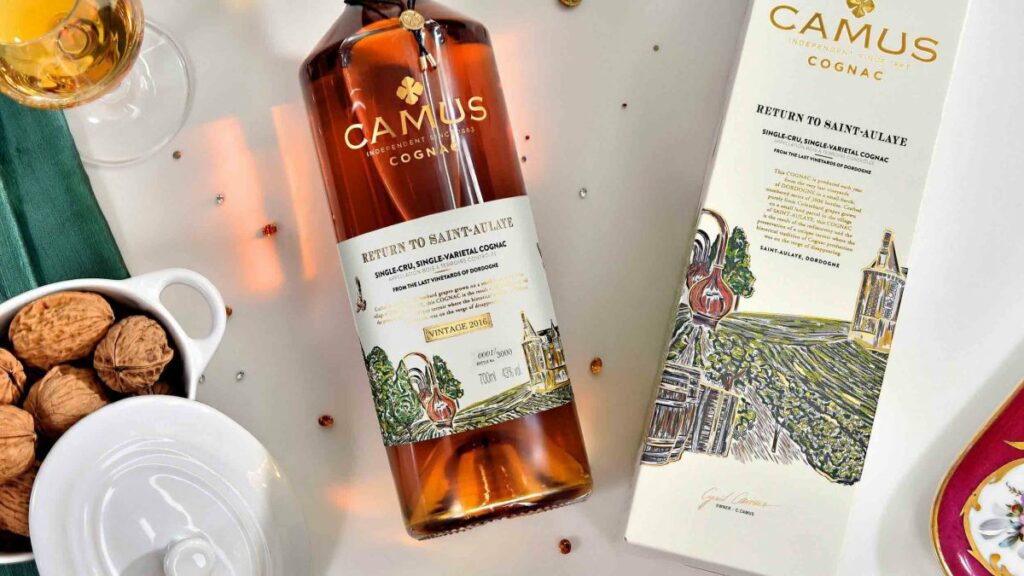Products You May Like
Camus Cognac has been produced by five generations of the family since 1863. Winegrower Jean-Baptiste Camus started the business. And Edmond, Gaston (under whom Camus became the official cognac pf the Tsar’s court in Russia, Michel (who introduced Limoges porcelain, Baccarat crystal, and frosted bottles), Jean-Pierre and now Cyril, who studied at Babson College in Massachusetts, continue the business founded at Chateau Plessis in Saint-Sulpice de Cognac.
The current Monsieur Camus developed the Company’s signature Borderies XO, a pure Borderies blend from the family’s own vineyards, and a new cognac from Ile de Re. Becoming President in 2004, he presided over the Camus Elegance range and last year’s Camus Expedition Cognac. Now comes £112/$132 return to Saint-Aulaye which has involved bring to life again an ancient terroir to create a new kind of Camus Cognac.

“There’s a common thread, which is about the research and development and a kind of research, which is not innovation for the sake of doing cool stuff,” explains Camus Global Brand Manager Pier Paolo Catucci.
“It’s like going back to what used to be done in the past. It is what we call the science of tradition, it’s a revival of traditional practices. By preserving those practices you’re also preserving a sort of terroir. In the case of Return to Saint-Aulaye, Camus is keeping alive a way of making a distinct type of Cognac, which was on the verge of disappearing.”

Return to Saint-Aulaye is a 2016 vintage Cognac made from Colombard grapes and is the first Cognac to come from the long-forgotten vineyards of Dordogne. It is a single-cru, single-varietal expression from the gastronomic hub of Perigord, which is part of the Cognac appellation.
The latest Cognac is the fruit of a collaboration between Camus and the Saint-Aulaye village council. The thirteenth-century small bastide town village on the river Dronne, near Riberac, has an eleventh-century church and was the birthplace of the first woman to travel around the world.

The decades-long project aims to rediscover and protect the region’s unique terroir, where Cognac production dates back to 1785. By the early 1990s, Cognac production in Dordogne had become negligible. In 1999, the Saint-Aulaye council decided to replant a small 1.5-hectare plot of Colombard grapes.
“The overall Cognac appellation is very wide. The landscapes and soils are different,” goes on Catucci.
Perigord has Geographical Indication for a series of products- truffles, walnuts, and foie gras. But it was the Saint-Aulaye’s mayor who discovered vineyards had once been planted by the Roman wall of the castle now the town hall with Colombard grapes. The town approached Camus about reviving production in the area known for its aromatic dessert wines. Camus discovered that the land was rich in acetate isoamyl, the base of banana aromas. When it ages, it is the precursor of “rancio”, the main marker of Cognac. Dordogne region’s wine is so aromatic that malolactic fermentation is not required. The new hyper-local Cognac uses barrels from the Dobel forest.
Catucci concludes: “Return to Saint-Aulaye makes a very good dinner or late afternoon Cognac”. The brand is preserving a terroir that was almost lost to time, but not for the sake of prestige. For the continuation of a 160-year-old tradition of making elegant Cognacs m worthy of the brand, “Le Grande Marque”.
